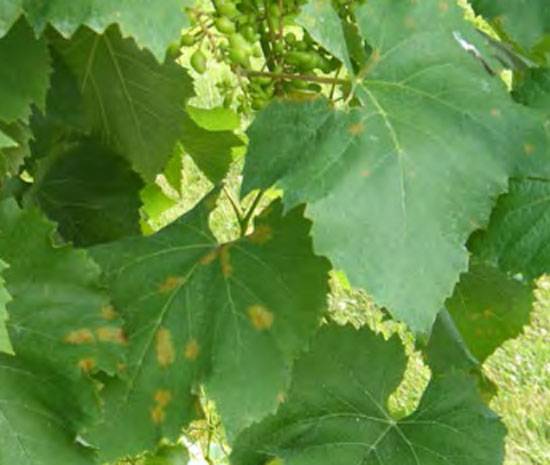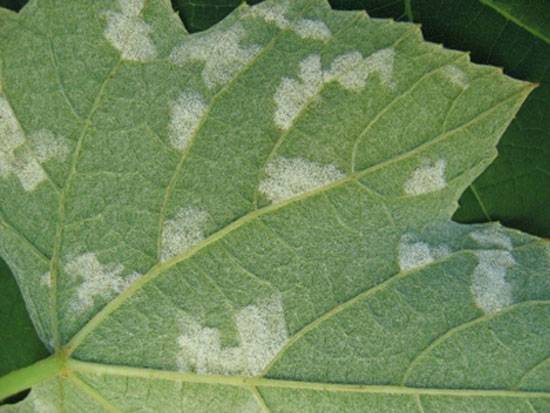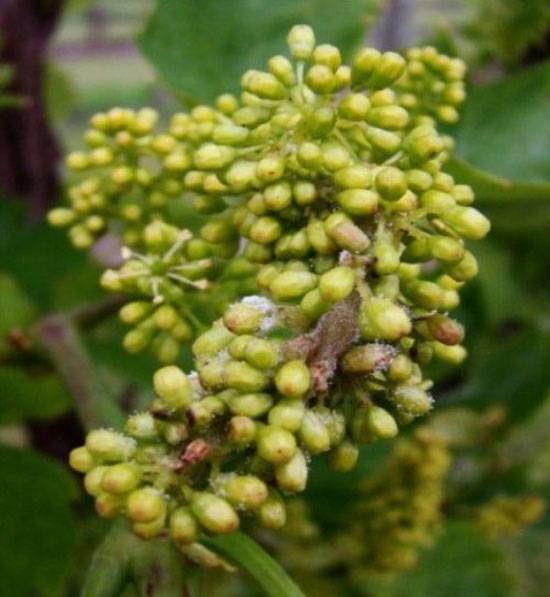Grapes
Downy Mildew

Plasmopara viticola
Fungal Disease

Plasmopara viticola
Fungal Disease

Plasmopara viticola
Fungal Disease

Plasmopara viticola
Fungal Disease

Plasmopara viticola
Fungal Disease

Plasmopara viticola
Fungal Disease
Grape downy mildew, caused by the pathogen Plasmopara viticola, is one of the most destructive diseases affecting grapevine health and productivity. Recognizing early symptoms and adopting preventive management practices are essential for minimizing losses, especially in areas prone to humid conditions.
Early Symptoms: What to Look For
The first sign of downy mildew is the appearance of yellow, water-soaked lesions on the upper side of grapevine leaves. These patches are an indicator of infection and typically appear during periods of high relative humidity, ranging from 80–100%. After 5 to 10 days, the disease progresses, with white, downy patches developing on the underside of the leaves. These patches, characteristic of the disease, are comprised of sporangiophores, tree-like structures that produce sporangia, or lemon-shaped spores.
Disease Development: Rapid Spread in Favorable Conditions
The downy mildew pathogen thrives in specific environmental conditions. The spores produced on the underside of the infected leaves are spread by wind and rain-splash, allowing the infection to spread to healthy grape tissue. The infection cycle can complete in as little as five days if conditions are ideal—temperatures between 20–25°C and high humidity. Under less favorable conditions, such as when temperatures drop to 12°C, the infection process may take up to 17 days.
Management Strategies: Prevention is Key
Managing downy mildew requires a proactive approach, particularly in areas with a history of the disease or during seasons with frequent rainfall. One of the most effective methods of control is ensuring good soil drainage, which helps reduce the amount of overwintering inoculum.
Fungicides play a vital role in the prevention and management of downy mildew. These are categorized as either preventive or curative. Preventive fungicides should be applied before the infection begins, as new growth after the application remains unprotected. When using fungicides, it’s important to include a spreader/sticker agent to prevent the chemical from washing off during rainfall. In vineyards with a history of downy mildew, early-season copper sprays are highly recommended as part of a comprehensive preventive program.
Additionally, grape growers should always refer to the latest guidelines from APEDA (Agricultural and Processed Food Products Export Development Authority) and NRC Grapes when selecting fungicides. These guidelines ensure compliance with export requirements regarding harmful fungicide and pesticide residue levels (MRLs), which are regularly updated.
Image Source: Michigen State University, UC IPM, TNAU




